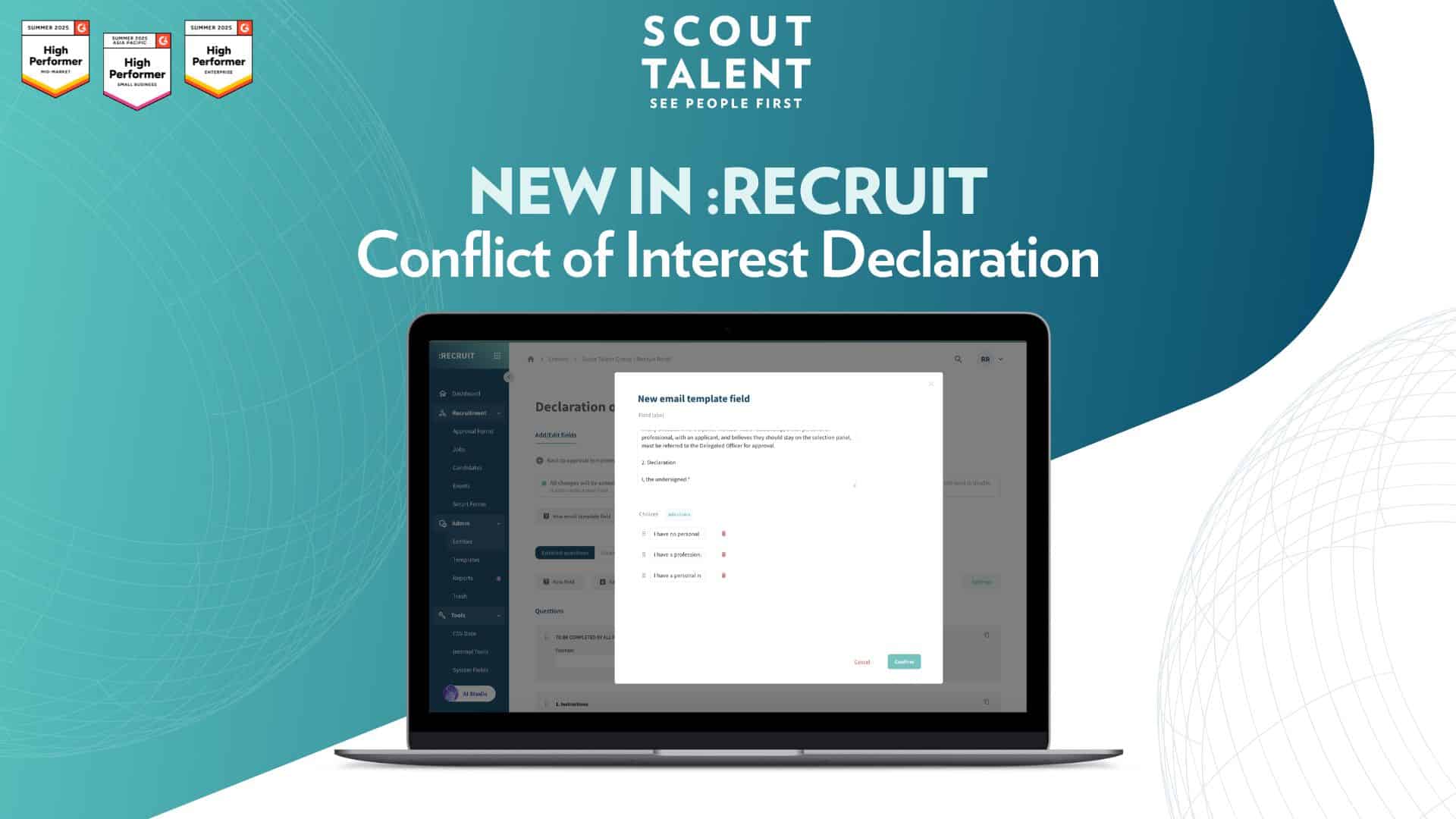In this current talent climate, the key to sustainable success is to look beyond candidate attraction and consider how your organisation will retain its talent. A proven strategy to do this is by prioritising your onboarding process which should be considered ahead of all the steps in the HR recruitment process. Want to increase your retention rate and hold on to top talent for longer? The statistics speak for themselves – an effective onboarding process can increase retention of new hires by an impressive 82%.
An effective onboarding process sets a strong foundation for new hires, enabling them to become productive, engaged, and committed members of the organisation. It benefits both the individuals and the company by fostering a positive work environment, reducing turnover, and driving retention. 6 out of 10 Australian managers have had an employee leave during probation due to poor onboarding. Recognising the importance of onboarding as the final step in the recruitment process and placing it at the forefront, organisations can maximise their chances of long-term success in talent acquisition and retention.
What is Onboarding?
Onboarding is the process of integrating and orienting new employees into an organisation. It involves providing them with the necessary knowledge, tools, resources, and support to quickly adapt to their new role and become productive members of the team. The onboarding process typically starts from the moment a new employee accepts a job offer and continues for a defined period, which could range from a few days to several months, depending on the organisation’s practices.
Some goals of your onboarding process should include:
- Orientation: Introducing new employees to the company’s mission, values, culture, policies, and procedures by providing an overview of the organisation’s structure, departmental functions, and expectations.
- Training: Providing job-specific training to familiarise new hires with their roles and responsibilities – such as technical training, shadowing experienced employees, or participating in workshops and seminars.
- Building relationships: Facilitating connections and relationship-building with colleagues, supervisors, and key stakeholders within the organisation.
- Providing resources: Equipping new employees with the necessary tools, software, equipment, and access to information systems required to perform their job effectively.
- Clarifying expectations: Setting clear performance expectations, goals, and objectives. This helps new hires understand what is expected of them and how their performance will be evaluated.
- Providing ongoing support: Offering ongoing support and guidance to help new employees navigate challenges, ask questions, and seek assistance when needed. This may involve regular check-ins, feedback sessions, or buddy systems.
Investing in a comprehensive onboarding process is crucial when considering the costs and time associated with end-to-end recruitment. Effective onboarding programs offer multiple benefits, such as higher employee engagement, faster time to productivity, increased retention rates, and improved overall satisfaction. These programs play a pivotal role in making new hires feel welcomed, valued, and integrated into the organisation.
By setting the right tone and equipping team members for success, they contribute to long-term satisfaction and effectiveness in their new roles. Read on to discover 11 valuable tips to optimise your onboarding process and ensure a smooth transition for new employees.
Onboarding Tips – 11 Key Tips for a Successful Induction
-
Connect before the first day
Eliminate the limbo period between accepting the job offer and starting the role by establishing communication with new hires before their first day.
At Scout Talent, managers and senior leaders are encouraged to connect with new team members on LinkedIn before their first day, so they are familiar with at least a few faces before they start.
“Connection starts before they even walk in on their first day – connect with your new starters on LinkedIn beforehand and send them an email that has all the information they need to know: what to wear, where they can park, what to expect in their first week, and so on. “ Recruitment Marketing Magazine on what makes a great induction process.
Additionally, organising an informal gathering with team members presents an excellent opportunity for new hires to start creating relationships with their colleagues even before their official first day. Engaging in shared meals or after-work happy hour events are popular and effective ways to foster camaraderie and social connections. So definitely invite them out ahead of day 1 and make them feel welcome.
-
Simplify paperwork
2 in 5 HR managers spend at least 3 hours collecting onboarding information manually. Streamline the onboarding process by adopting a digital contract creation solution like Scout Talent :Onboard. This will facilitate the creation, issuance, and acceptance of contexts and offer letters, as well as tracking other onboarding activities digitally, reducing paper trail.
-
Reinforce the organisation’s values
If you have strong employer branding, chances are your new team members will have seen or heard of your organisation’s values during the recruitment process. Regardless of whether they’re familiar, it’s important to reiterate your organisation’s values during induction – explain what they are, why they are pillars of your organisation’s culture, and how the employees embody these values.
Reinforcing those values helps to establish a psychological contract, reinforcing the alignment between new hires and the organisation.
-
Introduce the organisation
Ensure new starters are introduced to the people within the organisation beyond their immediate manager and hiring manager. Accompany them on a tour of the workspace, allowing them to meet their new coworkers and representatives from various departments. These introductions foster connections and make new hires feel welcome.
-
Implement a buddy system
Go the extra mile in welcoming new starters by buddying them up with an existing team member who they can turn to as a familiar face to ask any questions.
This onboarding tactic is particularly useful in large organisations, as you can partner with people who work across different departments and may not otherwise interact. Job-specific knowledge can come from training and from new starters’ team members or managers; their buddy is designed to help them find their feet in their first few weeks.
Tip: Request volunteers from the organisation to serve as buddies. This ensures the process is as comfortable as possible for both the buddy and the new starter.
-
Involve senior leadership
Recognition is one of the key factors in making team members feel valued. Show new starters that they are valued from day one by arranging for them to meet senior leaders in the organisation during the onboarding process.
Invite senior leaders to introduce themselves or accompany new starters on office tours. This gesture fosters a sense of belonging and demonstrates that key decision-makers are aware of their arrival.
-
Highlight learning and development
An onboarding process is a form of Learning & Development (L&D) itself, as new starters learn about your organisation and its roles. Keep the momentum going by explaining other L&D pathways available to them – do you have training days or seminars? Can team members access online courses? What about career development?
Research shows that learning and development programs are key to boosting employee job satisfaction, motivation and retention, so highlighting these opportunities can contribute to higher retention and employee satisfaction rates.
-
Facilitate resources
Ensure new starters are aware of where to find the tools they need to succeed in their roles. Prepare in advance by providing phone lists, setting up equipment, and designating key individuals in the organisation whom they can approach for assistance. This organisation and preparedness eliminate confusion and enable new hires to get started more efficiently.
-
Get to know the new starters
While the main purpose of onboarding is to teach new starters about your organisation, it’s important that you get to know them, too – after all, they’re now your team members!
Arrange a free lunch on their first day with key leaders in the organisation as an opportunity to foster a welcoming environment and establish genuine connections beyond formal interview settings.
-
Schedule an onboarding celebration
Once you’ve finished your induction, take the time to celebrate! You’ve just onboarded new team members and that represents exciting growth for both your new starters’ careers and your organisation.
Mark the occasion by calling a short organisation-wide meeting where available team members can gather for a few minutes to recognise and celebrate the new starters’ completing their orientation.
-
Set a reminder to check in
Just as the onboarding process should start before the first day, it should also continue past the first few weeks. Retaining talent is key to staying successful, especially in a competitive talent climate, so be sure to check in on your new starters and seek feedback on their onboarding experience, enabling improvements for future hires.
Another great way to improve employee satisfaction is by performing regular employee engagement surveys to better understand your team members’ experience. That way you can see the areas your organisation is doing well and where improvements are needed.
Need help keeping track of your onboarding process? We can help! Scout Talent offers onboarding, learning and training services that’ll help you ensure your new hires start their journey on the best possible note. Get in touch with our team at marketing@scouttalent.com.au and together let’s start building a strong foundation for your new employees and foster a culture of engagement, retention, and success within your organisation.






